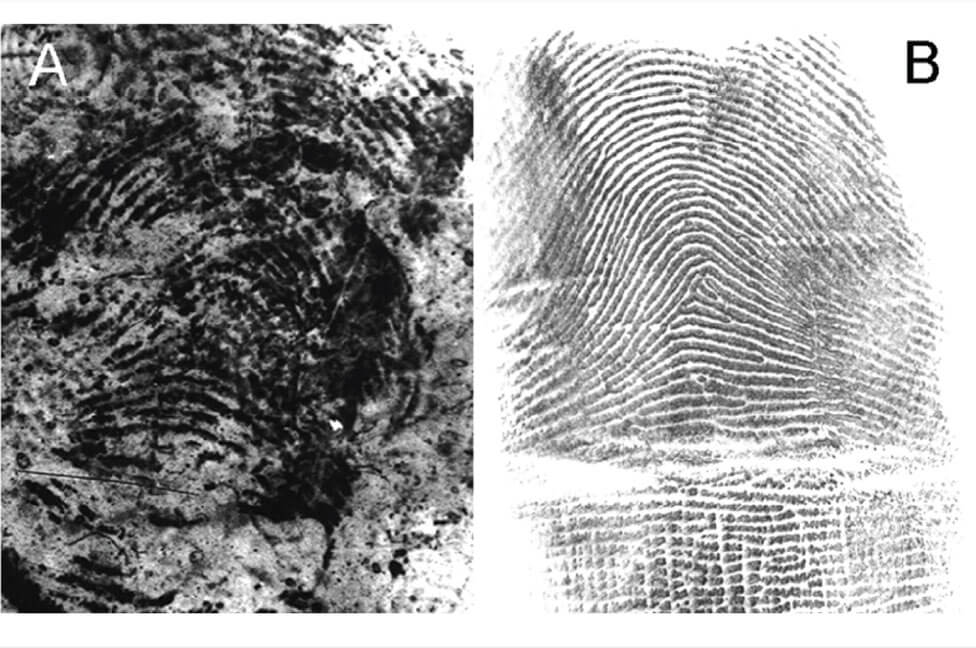Erroneous Identification – The Brandon Mayfield & Madrid Train Bombing Case: Lessons Learned in Fingerprint Identification
04/30/2024
by Kourosh Nikoui | April 30, 2024 | Fingerprints
Fingerprint identification has long been regarded as a cornerstone of forensic science, relied upon to solve crimes with a high degree of certainty. However, the case of Brandon Mayfield and the Madrid Train Bombing serves as a stark reminder of the challenges and consequences associated with fingerprint analysis.
The Case of Brandon Mayfield:
In 2004, Brandon Mayfield, an American attorney, was erroneously linked to the Madrid Train Bombing that killed 191 people and injured thousands. The FBI had identified a latent fingerprint found on a bag containing detonators as belonging to Mayfield. This identification was based on a digital image comparison that supposedly matched Mayfield’s prints in their database.
Challenges in Fingerprint Identification:
- Human Error and Subjectivity: Despite advancements in technology, fingerprint analysis remains susceptible to human error and subjectivity. In the Mayfield case, the FBI’s analysts misinterpreted the similarity between the latent print and Mayfield’s prints.
- Confirmation Bias: Analysts may unconsciously favor evidence that supports their initial hypothesis, leading to confirmation bias. This can potentially result in erroneous identifications, as seen in the Mayfield case.
- Legal and Ethical Implications: The mistaken identification of Mayfield had profound legal and ethical implications. He was detained for two weeks as a material witness, and his reputation was severely damaged due to the highly publicized accusation.
Consequences of Erroneous Identification:
The fallout from the misidentification of Brandon Mayfield highlighted several critical issues:
- Public Trust in Forensic Science: The case eroded public confidence in the reliability of fingerprint identification and raised questions about the adequacy of oversight and quality control measures within forensic laboratories.
- Legal Precedent: Mayfield’s case underscored the need for rigorous scrutiny of forensic evidence in legal proceedings. It prompted discussions on the limitations of fingerprint analysis and the potential for errors, impacting how such evidence is presented in court.
- Policy and Procedural Reforms: In response to the Mayfield case, the FBI conducted an internal review and implemented reforms to enhance the accuracy and reliability of fingerprint analysis. This included improving training programs and instituting stricter verification procedures for fingerprint identifications.
Lessons Learned and Reforms Implemented:
The Brandon Mayfield case prompted significant reforms within forensic science and law enforcement agencies:
- Enhanced Training and Procedures: Agencies, including the FBI, revised their training protocols to emphasize the importance of thorough analysis and verification of fingerprint evidence. This includes adhering to strict ACE-V (Analysis, Comparison, Evaluation, and Verification) protocols to minimize
- Technological Advancements: Investments were made in improving fingerprint analysis technologies, such as enhancing automated matching algorithms and digital imaging capabilities, to reduce the risk of misidentifications.
- Transparency and Accountability: There is now greater emphasis on transparency in forensic practices, with agencies actively engaging in public outreach to educate stakeholders about the strengths and limitations of fingerprint evidence.
Conclusion:
While the Brandon Mayfield case highlighted vulnerabilities in fingerprint identification, it also spurred positive changes in forensic practices. Through rigorous training, enhanced technologies, and improved oversight, agencies have taken steps to mitigate the risks of misidentification and uphold the integrity of forensic evidence in criminal investigations.
In the pursuit of justice, it is essential to recognize the complexities of forensic science and continually strive for improvements, as well as conduct thorough scrutiny, to ensure accurate and reliable outcomes.
References:
- Federal Bureau of Investigation (FBI) – Official reports and reviews on forensic science reforms post-Brandon Mayfield case. Available at: fbi.gov
- National Institute of Justice (NIJ) – Research and publications on forensic science advancements and challenges in fingerprint identification. Available at: nij.gov
- American Bar Association (ABA) – Articles and resources on legal implications and reforms in forensic science following the Mayfield case. Available at: americanbar.org
Forensic Investigator and Specialist Kourosh Nikoui, Principal Consultant and CEO of Nikoui & Associates, Forensic Identification Services & Consulting, Inc., has over 38 years of full-time experience in forensic science and criminal justice with various law enforcement agencies, government and private entities. Mr. Nikoui, a court-qualified expert, is a Certified Latent Print Examiner, Certified Senior Crime Scene Analyst, and Certified Forensic Photographer by the International Association for Identification. He has testified as an expert witness over 150 times in California Superior and U.S. Federal Courts, processed evidence in over 30,000 criminal and civilian cases, and served as a consultant to numerous law enforcement agencies. Mr. Nikoui holds a BFA degree from USD and is an active member of multiple forensic science organizations. He can be reached directly by calling (866)439-6753 or by email at [email protected]
